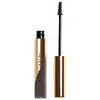What's inside
What's inside
 Key Ingredients
Key Ingredients

 Concerns
Concerns

 Ingredients Side-by-side
Ingredients Side-by-side

Isododecane
EmollientTalc
AbrasiveTrimethylsiloxysilicate
EmollientDimethicone
EmollientBeeswax
Emulsion StabilisingVp/Eicosene Copolymer
Caprylyl Methicone
Skin ConditioningTrihydroxystearin
Skin ConditioningTriethylhexanoin
MaskingTrisiloxane
Skin ConditioningDisteardimonium Hectorite
StabilisingSilica
AbrasiveHdi/Trimethylol Hexyllactone Crosspolymer
Propylene Carbonate
SolventPentaerythrityl Tetra-Di-T-Butyl Hydroxyhydrocinnamate
AntioxidantUltramarines
CI 75470
Cosmetic ColorantIron Oxides
CI 77891
Cosmetic ColorantIsododecane, Talc, Trimethylsiloxysilicate, Dimethicone, Beeswax, Vp/Eicosene Copolymer, Caprylyl Methicone, Trihydroxystearin, Triethylhexanoin, Trisiloxane, Disteardimonium Hectorite, Silica, Hdi/Trimethylol Hexyllactone Crosspolymer, Propylene Carbonate, Pentaerythrityl Tetra-Di-T-Butyl Hydroxyhydrocinnamate, Ultramarines, CI 75470, Iron Oxides, CI 77891
Isododecane
EmollientTrimethylsiloxysilicate
EmollientCeresin
Emulsion StabilisingTitanium Dioxide
Cosmetic ColorantTalc
AbrasiveDisteardimonium Hectorite
StabilisingMicrocrystalline Wax
Emulsion StabilisingDextrin Palmitate
EmulsifyingCI 77492
Cosmetic ColorantPropylene Carbonate
SolventPolypropylsilsesquioxane
CI 77499
Cosmetic ColorantDextrin Palmitate/Ethylhexanoate
EmulsifyingPolyisobutene
PEG-20 Glyceryl Stearate
EmulsifyingCI 77491
Cosmetic ColorantPolymethylsilsesquioxane
Triethoxycaprylylsilane
Glyceryl Caprylate
EmollientSilica
AbrasiveIsododecane, Trimethylsiloxysilicate, Ceresin, Titanium Dioxide, Talc, Disteardimonium Hectorite, Microcrystalline Wax, Dextrin Palmitate, CI 77492, Propylene Carbonate, Polypropylsilsesquioxane, CI 77499, Dextrin Palmitate/Ethylhexanoate, Polyisobutene, PEG-20 Glyceryl Stearate, CI 77491, Polymethylsilsesquioxane, Triethoxycaprylylsilane, Glyceryl Caprylate, Silica
 Reviews
Reviews

Ingredients Explained
These ingredients are found in both products.
Ingredients higher up in an ingredient list are typically present in a larger amount.
Disteardimonium Hectorite comes from the clay mineral named hectorite. It is used to add thickness to a product.
It can also help stabilize a product by helping to disperse other ingredients.
Hectorite is a rare, white clay mineral.
Learn more about Disteardimonium HectoriteIsododecane is a fragrance, emollient, and solvent.
As an emollient, it helps your skin stay soft and hydrated. Emollients help trap moisture into your skin.
Isododecane's role as a solvent makes it a great texture enhancer. It spreads smoothly on skin and does not leave a sticky feeling behind. Isododecane also helps prevent color transfer in makeup products.
Isododecane is not absorbed into skin.
Learn more about IsododecaneThis ingredient is a solvent. It helps dissolve active ingredients and alter the texture of products.
Propylene Carbonate is commonly used in makeup and with clay, such as montmorillonite or bentonite.
Studies show this ingredient to be safe for cosmetics. When it is undiluted, it can cause skin irritation. (It is always diluted in skincare and makeup). This ingredient is water-soluble.
Propylene Carbonate is created from propylene glycol and carbonic acid.
Learn more about Propylene CarbonateSilica, also known as silicon dioxide, is a naturally occurring mineral. It is used as a fine, spherical, and porous powder in cosmetics.
Though it has exfoliant properties, the function of silica varies depending on the product.
The unique structure of silica enhances the spreadability and adds smoothness, making it a great texture enhancer.
It is also used as an active carrier, emulsifier, and mattifier due to its ability to absorb excess oil.
In some products, tiny microneedles called spicules are made from silica or hydrolyzed sponge. When you rub them in, they lightly polish away dead skin layers and enhance the penetration of active ingredients.
Learn more about SilicaTalc is a clay mineral. It helps absorb moisture and improve the texture of products. Like other types of clay, Talc can have a slight exfoliating effect on skin. Talc can be added to increase the volume of products.
Some Baby powders are made by combining talc with corn starch. The word "talc" comes from Latin and originates from Arabic. Talc is a mineral commonly found throughout the world.
If you have any concerns about using talc, we recommend checking out the FDA's official page.
Learn more about TalcThis silicone is an emollient. Emollients create a thin film on the skin to prevent moisture from escaping.
It is not soluble in water and helps increase water-resistance in products.
According to a manufacturer, it can blend seamlessly with silicone oils, such as Cyclopentasiloxane.
Learn more about Trimethylsiloxysilicate